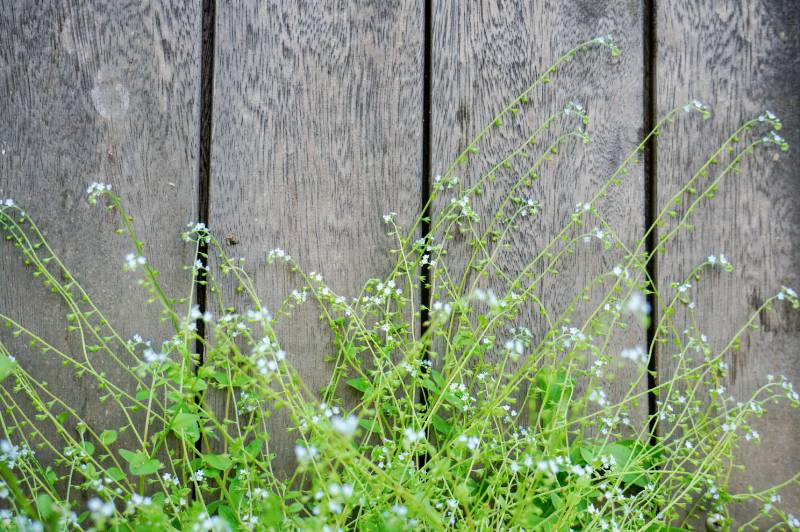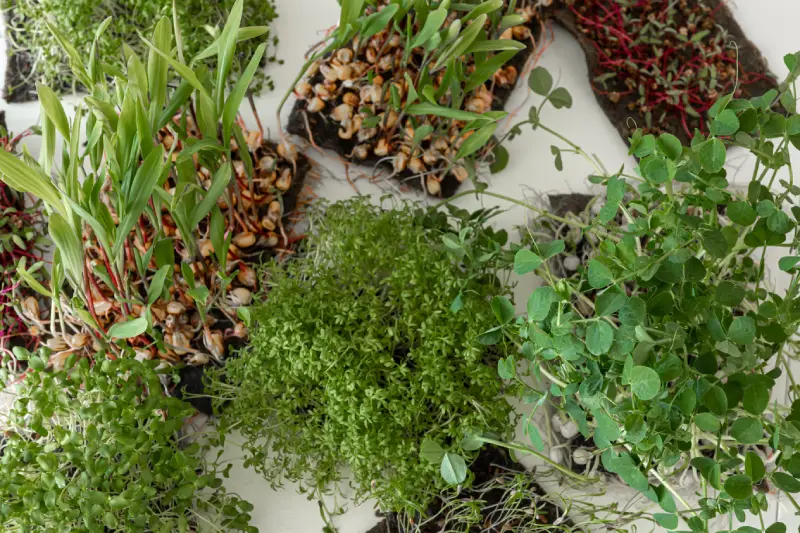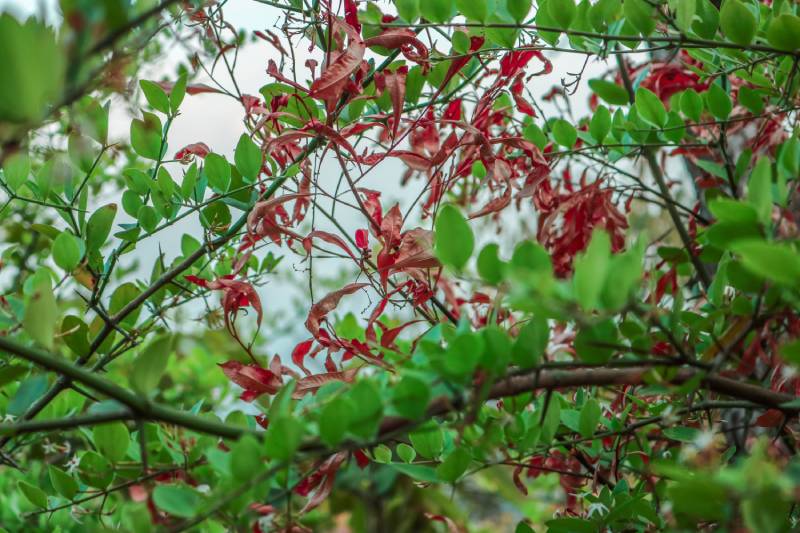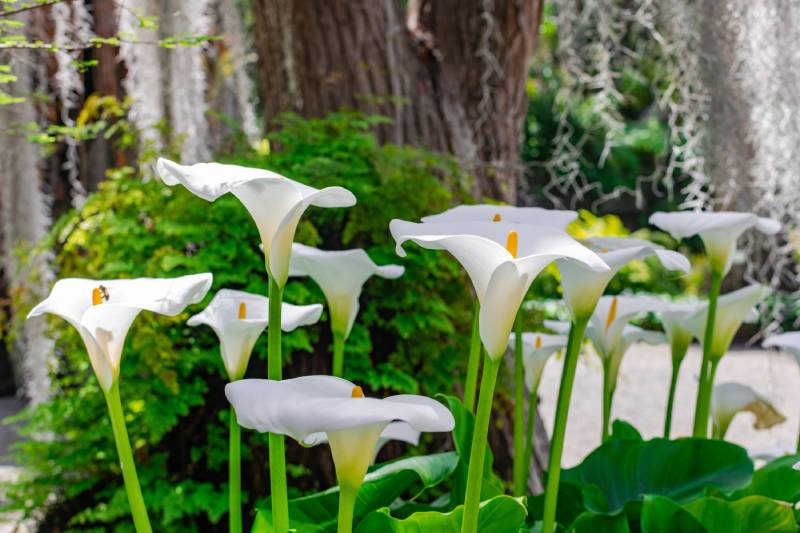CREEPING THYME: TIPS FOR GROWING, CARING FOR, AND PLANTING

Creeping Thyme, a versatile and hardy plant, is not only a visual delight with its lush carpet of tiny, fragrant leaves and vibrant flowers, but also a practical addition to your garden. Whether you’re looking to fill gaps between stepping stones, create a lush ground cover, or simply add some greenery, Creeping Thyme is an excellent choice. In this guide, we’ll explore everything you need to know about growing, caring for, and designing with Creeping Thyme, equipping you with the knowledge to make your garden thrive with beauty and ease.
What are Creeping Thyme Plants

The low-growing perennial plant known as creeping Thyme (Thymus serpyllum) is prized for its fragrant foliage and eye-catching pink, purple, and white blooms. Part of the mint family and native to Europe and North Africa, creeping Thyme is prized for its remarkable low maintenance needs and hardiness. Its ability to increase and develop dense mats—which can help suppress weeds and stop soil erosion—makes it a popular choice for ground cover. Beyond being beautiful, creeping Thyme may be added to culinary preparations and lend a delicious flavor to your meals.
10 Best Ways to Grow Creeping Thymes

Choosing the Right Location
Creeping Thyme thrives in well-drained soil and requires full sun to partial shade. It’s crucial to select a location that receives at least 6 hours of sunlight daily. This plant is ideal for rock gardens, between pavers, or as a ground cover in sunny areas of your garden.
Soil Preparation
Prepare the soil by ensuring it is well-draining and moderately fertile. Add organic matter, such as compost, to sandy or heavy clay soils to enhance fertility and texture. Creeping Thyme prefers a soil pH between 6.0 and 8.0, so test your soil and adjust it accordingly.
Planting Seeds or Seedlings
You can grow Creeping Thyme from seeds or seedlings. Sow seeds in early spring or start them indoors 6-8 weeks before the last frost. If planting seedlings, space them 12-18 inches apart to allow for spreading. Gently firm the soil around the roots and water thoroughly.
Watering
Creeping Thyme is drought-tolerant once established but needs regular watering during its initial growth phase. Keep the soil consistently moist but not soggy. Once established, reduce watering to once a week or whenever the soil feels dry.
Mulching
Cover the plants with a light layer of mulch to keep moisture and weeds out. Wood chips or straws make good organic mulch. Avoid covering the plants directly since this may cause decay.
Fertilizing
Feed Creeping Thyme with a balanced, slow-release fertilizer in early spring. Avoid high-nitrogen fertilizers, as they can promote excessive foliage growth at the expense of flowers. Organic options like compost or fish emulsion are excellent choices.
Pruning
Regular pruning helps maintain the plant’s shape and encourages denser growth. Trim back any dead or woody stems in early spring before new growth begins. Lightly shear the plants after flowering to promote a second bloom and tidy appearance.
Controlling Pests
Creeping Thyme is relatively pest-resistant but can occasionally be affected by aphids or spider mites. Use insecticidal soap or a strong jet of water to control minor infestations. Ensure good air circulation to prevent fungal diseases.
Encouraging Flowering
For prolific blooms, ensure your Creeping Thyme receives plenty of sunlight and moderate watering. Deadheading spent flowers can also encourage more blooms and prevent self-seeding.
Companion Planting
Creeping Thyme pairs well with other low-growing plants like creeping phlox, sedum, and moss. Its aromatic foliage can also repel certain pests, making it a great companion plant in vegetable gardens.
10 Best Methods to Take Care of Creeping Thyme Plants

Watering Consistently
During the plant’s establishment stage, keep the soil continuously moist. Since creeping Thyme tolerates drought, water it only after it reaches a mature stage and the soil feels completely dry.
Providing Adequate Sunlight
Ensure your Creeping Thyme receives at least 6 hours of direct sunlight each day. In hot climates, partial afternoon shade can prevent scorching.
Mulching Wisely
Mulch helps keep the soil moist and weeds away, but don’t pile mulch up against the stems to prevent rot. Wood chips and straws are good examples of organic mulches.
Fertilizing Properly
Early in the spring, fertilize your plants with a slow-release fertilizer that is balanced. Choosing organic options like compost will prevent excessive foliage growth caused by overfertilization.
Pruning Regularly
To stimulate a second bloom and keep the plants looking tidy, trim any dead or woody stems in the early spring and give them a gentle shear after they flower.
Controlling Pests and Diseases
Look for fungal infections, spider mites, and aphids on your plants. Manage pests and ensure adequate air circulation by using organic insecticides or insecticidal soap to stave off illnesses.
Dividing and Transplanting
Divide your Creeping Thyme plants every few years to maintain their vigor and prevent overcrowding. Early spring is the best time for this task.
Protecting in Winter
In colder climates, provide a layer of mulch to protect the plants from freezing temperatures. In milder regions, Creeping Thyme remains evergreen and requires minimal winter care.
Soil Maintenance
Maintain well-drained soil by amending it with organic matter regularly. Avoid overwatering, as Creeping Thyme prefers slightly dry conditions once established.
Encouraging Pollinators
Creeping Thyme flowers attract bees and butterflies, which is beneficial for pollination. Planting them in clusters can enhance your garden’s biodiversity and health.
10 Methods to Take Care of Creeping Thyme Plants

Taking of the Plant at its Different Growth Stages
Seedling Stage
During the seedling stage, keep the soil consistently moist and provide gentle warmth and light. Thin seedlings to prevent overcrowding and encourage vigorous growth.
Establishment Stage
As the plants are established, gradually reduce watering to encourage deep root growth. Provide adequate sunlight and protect young plants from pests.
Mature Stage
In the mature stage, Creeping Thyme becomes more drought-tolerant. Water only when the soil is dry, prune regularly to maintain shape, and fertilize sparingly.
Flowering Stage
During Flowering, deadhead spent blooms to encourage more flowers. Ensure the plants receive adequate sunlight and moderate irrigation to encourage brilliant blooms.
Dormant Stage
In colder climates, Creeping Thyme may enter dormancy. Protect the plants with mulch and reduce watering. In milder regions, the plants may remain evergreen.
Taking Care of Different Varieties of the Plant

Woolly Thyme
Woolly Thyme (Thymus pseudolanuginosus) has soft, woolly foliage and is excellent for ground cover. It needs well-draining soil and good sunlight to partial shade.
Lemon Thyme
Thymus citriodorus, sometimes called lemon thyme, is a great culinary herb with a lovely lemon scent. It thrives with frequent pruning, whole light, and well-drained soil.
Elfin Thyme
The dwarf cultivar Elfin Thyme (Thymus serpyllum ‘Elfin’) is perfect for rock gardens and cramped areas. It needs full sun, well-drained soil, and, once established, little watering.
Mother of Thyme
Mother of Thyme (Thymus praecox) is a low-growing variety with pink or purple flowers. It is perfect for ground cover because it grows well in full sun and well-drained soil.
Doone Valley Thyme
Doone Valley Thyme (Thymus serpyllum ‘Doone Valley’) has variegated foliage and lemon-scented leaves. It likes full sun, well-drained soil, and sporadic irrigation during dry spells.
7 Exotic Ways to Design Creeping Thymes in Your Garden

Between Stepping Stones
Plant Creeping Thyme between stepping stones to create a lush, aromatic pathway. Its low-growing habit and fragrance make it perfect for this use.
Rock Gardens
Use Creeping Thyme in rock gardens to add color and texture. Its ability to thrive in well-drained, rocky soil makes it an ideal choice.
Ground Cover
Create a dense, evergreen ground cover with Creeping Thyme. It suppresses weeds, prevents soil erosion, and adds visual interest throughout the year.
Container Gardens
Plant Creeping Thyme in containers for a portable burst of greenery. Combine with other herbs and flowers for a beautiful, fragrant display.
Border Edging
Use Creeping Thyme as a border edging for flower beds and walkways. Its low, spreading growth habit creates a neat and attractive edge.
Herb Spirals
Incorporate Creeping Thyme into herb spirals for a stunning, multi-dimensional garden feature. Its trailing habit complements the spiral’s structure.
Vertical Gardens
Plant Creeping Thyme in vertical gardens or living walls. Its trailing growth and minimal care requirements make it a perfect candidate for these installations.
Conclusion
Creeping Thyme is a versatile and resilient plant that brings a multitude of benefits to your garden. From its aromatic foliage and vibrant blooms to its low-maintenance nature and ground-covering capabilities, Creeping Thyme is a true garden gem. You can ensure this plant grows well and provides a captivating element to your outdoor space by choosing the ideal spot, preparing the soil, and giving it the attention it needs throughout its several growth stages. Creeping Thyme’s adaptability and aesthetic appeal is unmatched, whether you’re using it between stepping stones, in rock gardens, or as a beautiful border edging. Moreover, its ability to attract pollinators and deter pests makes it a valuable addition to both ornamental and edible gardens. Embrace the charm of Creeping Thyme and watch as your garden transforms into a lush, fragrant haven. Happy gardening, and may your Creeping Thyme flourish and fill your garden with beauty and delight!


Leave a Reply